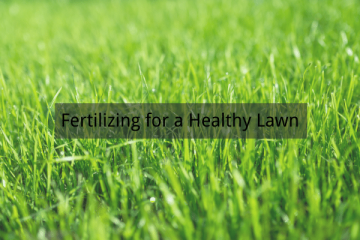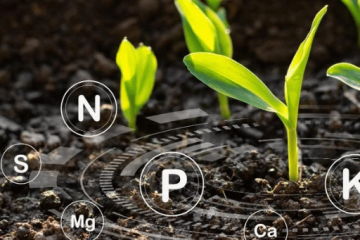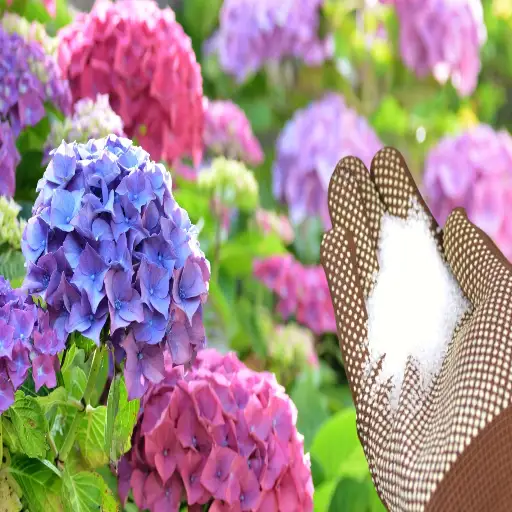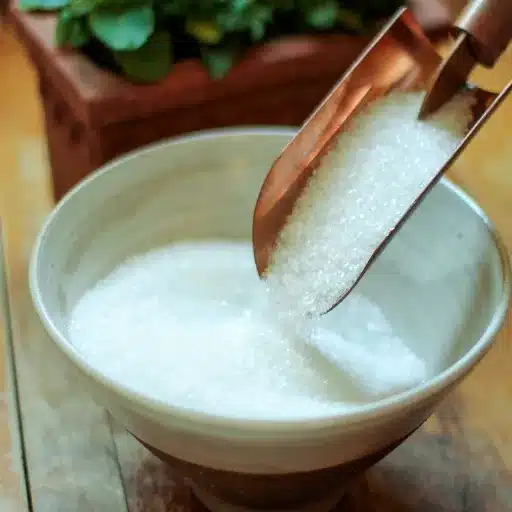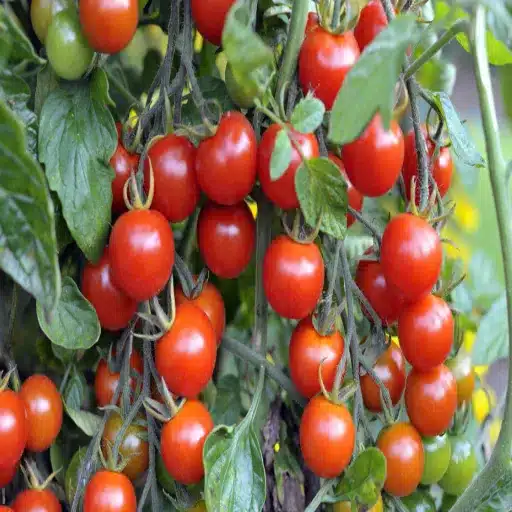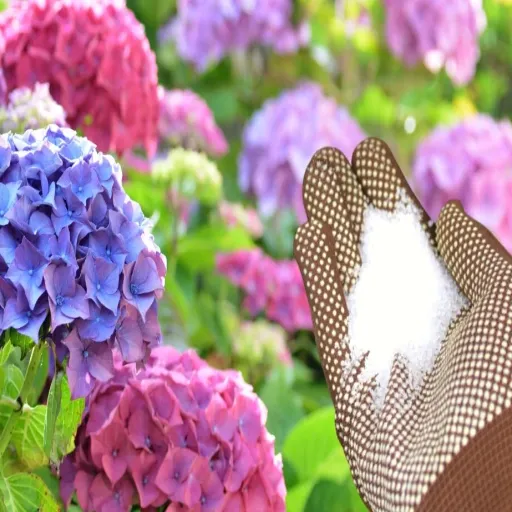Epsom salt, chemically known as magnesium sulfate, has been a staple in gardening for years, celebrated for its ability to enrich soil and promote healthier, more vibrant plants. This article dives into the science behind Epsom salt, exploring the integral roles magnesium and sulfur play in plant growth and how these essential nutrients can enhance your garden’s overall health. Whether you’re looking to boost nutrient absorption, improve plant resilience, or encourage lush foliage, understanding how Epsom salt works can transform how you care for your plants. By striking the right balance and application, this versatile compound can become an indispensable part of your gardening routine.
How Does Epsom Salt Benefit Plants?
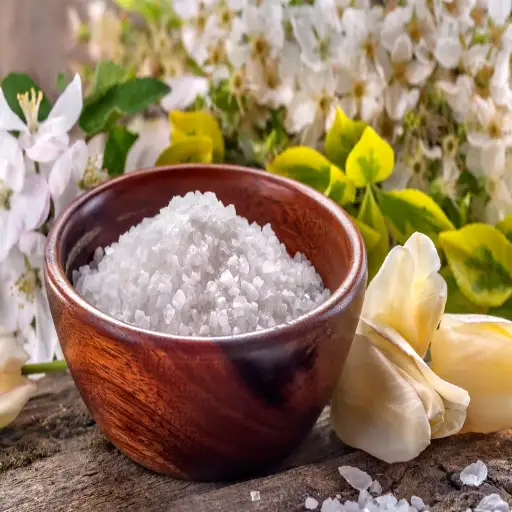
Understanding the Role of Magnesium and Sulfur
The components of Epsom salt, magnesium, and sulfur contribute significantly to the sustenance and growth of various plants. The inclusion of magnesium enables firms to convert the sunlight to useable energy through photosynthesis since magnesium serves as the central element in the chlorophyll molecule. This in turn affects the plants’ ability to consume energy. Chlorosis, stunted growth, and low crop yield are signs of low magnesium concentrations. For optimal growth in plants, magnesium concentration needs to be in the range of 0.2%-0.4%.
In contrast, sulfur is also crucial for the stavege of certain proteins in the human body and the activation of certain enzymes. Sulfur deficiency is easily detectable as pale, underdeveloped leaves and low growth and strife resistance. Various plants in dry conditions have a build-up in tissue and requirea reasonable amount of sulfur (0.1% to 0.5%).
Epsom salt can be delivered directly to the plants by applying it to the soil or as a foliar spray. For soil applications, a typical mixture is one tablespoon, about 15 grams, per square foot of soil, mixed with the top inch of dirt. For foliar feeding, one tablespoon of Epsom salt can be added to a gallon of water to accelerate rapid uptake. Used in moderate amounts, these practices can help overcome nutrient deficiencies and stimulate robust growth of the plants.
Does Epsom Salt Enhance Nutrient Uptake?
Yes, Epsom salt helps increase the absorption of nutrients by the plants, especially because it supplies two elements, magnesium (Mg) and sulfur (S), which aid in several physiological activities in plants. While Magnesium enhances photosynthesis as the key atom in chlorophyll and assists in its formation, sulfur aids in amino acids, enzymes, and overall metabolism in plants.
- Magnesium (Mg): A magnesium poorly nourished plant will show magnesium deficiency through older leaves which will turn yellowish (chlorotic) with green veins, which lessen the rate of photosynthesis. The magnesium constituent of Epsom salt is magnesium sulfate (MgSO₄) which is readily soluble and can be easily absorbed.
- Sulfur (S): Sulfur is significant in the development of chloroplast. Magnesium sulfate also supplies soft sulfate sulfur, which can be readily used by plants.
- Application Rates: For effective soil Application, Epsom salt is recommended at 1-2 tablespoons per square foot made into the topsoil to ensure no layering occurs. For foliar feeds, water with a dilution of 1 tablespoon per gallon of water during the active growth seasons helps the leaves quickly absorb the nutrition.
Epsom salt, if correctly applied, also helps remediate a deficiency, enhances nutrient mobility, and improves the overall health of the plant.
Why is Magnesium Deficiency a Concern for Plants?
Magnesium deficiency poses a serious threat to plants, especially with magnesium being the key element of chlorophyll, which is crucial to photosynthesis. When magnesium deficient, plants are not able to produce sufficient energy, which leads to stunted growth, interveinal chlorosis, and lower yields. Magnesium deficiency symptoms start appearing in the older leaves first because magnesium is immobile in the plant and is stored in the older leaves.
- Soil Application: 1-2 tablespoons of Epsom salt should be incorporated into the topsoil for every square foot to guarantee uniform coverage.
- Foliar Spraying: For faster uptake, spray the leaves with a solution made from 1 tablespoon of Epsom salt diluted into a gallon of water.
These explanations and examples of magnesioum corrective measures are made certain to efficiently and accurately target magnesium deficiency, allowing the plants to regain magnesium metabolism and growth.
How to Use Epsom Salt in the Garden?

Methods for Adding Epsom Salt to Soil
There are several ways to adequately supplement magnesium when using Epsom salt on a garden that is in high need of magnesium:
- Direct soil application: In my opinion, blanketing garden soil with 1-2 tablespoons of Epsom salt per square foot is the most practical method. This amount is enough to solve most magnesium shortages and is not too large of an amount for the soil to handle. I start with salt application by scattering it on the surface so that it covers my garden’s soil and then mixing it into the topsoil.
- Pre planting soil augmentation: While planting, I apply 1 cup of Epsom salt per 100 square feet. This methods gives salt sufficient time to dissolve in the soil while helping seed or seedlings enhance their root development to absorb nutrients more effectively.
- Water soluble application: With this method, I dissolve a tablespoon of Epsom salt in a gallon of water. The magnesium will be dissolved in the water and topped so the salt can be absorbed directly by the plant. This application is successful in areas with sandier soils where more irrigation is needed.
Following these methods makes certain that there is no risk of health-harming over-application or nutrient bleed.
What is the Ideal Salt Per Gallon of Water Ratio?
In my experience and research, the best ratio of salt for plants, in particular Epsom Salt (magnesium sulfate), is 1 tablespoon per gallon of water. This ratio appropriate concentration of magnesium and sulfur for plants while not exceeding safe limits that can negatively impact the plant or soil composition.
- Magnesium Content: This concentration is sufficient to meet the magnesium deficiency common in plants, which shows up as stunted growth and yellowing leaves.
- Sulfur Content: Sulfur, as an essential component for protein, is also well diluted at this ratio, making it available for soil healthy and other nutrients.
- Absorbability: This ratio enables even distribution throughout the plant as well as faster absorbability, especially by sandier soils and during foliar sprays.
This ratio is extraordinarily common accepted for its moderate level of both efficacy and safety, ensuring the plant receives the right amount of nutrients without the counterproductive situation of over-fertilizing.
Common Mistakes When Using Epsom Salt in Gardening
- Overuse: One common mistake is using too much Epsom salt, which can throw soil nutrients out of balance. For example, too much magnesium in the soil interferes with important nutrient uptake, such as calcium and potassium. To prevent this from happening, follow the recommended regular application amount of 1 tablespoon per gallon of water.
- Lack of Soil Analysis: Using Epsom salt without soil testing can have negative consequences or may simply be ineffective. A soil test will confirm that magnesium deficiency is present before applying, as unnecessary application can lead to toxic and environmental problems.
- Over-application: Increased and overuse can result in saline accumulation in the soil which deteriorates soil quality and plant growth. It is recommended to restrict application rate, use foliar sprays monthly or only when magnesium deficiencies are observed or confirmed.
- Not Considering Type of Plant: Different types of plants have different responses to Epsom salt treatments. Plants that require high levels of magnesium, like tomatoes, peppers, and rose,s are likely to respond positively, while its application on other types of plants is useless or damaging in the absence of a magnesium deficiency.
In following the suggested practices like attending to periodic soil analysis, applying Epsom salt in Epsom salt quantities appropriate to the plant’s requirement, these blunders can be averted while maximizing the advantages of Epsom salt in gardening.
Is Epsom Salt Good for Preventing Blossom End Rot?
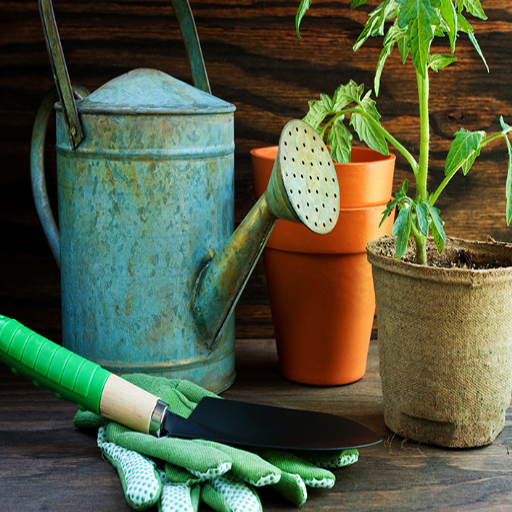
Understanding Prevent Blossom End Rot with Epsom Salt
Though Epsom salt is a recommended cure for blossom end rot, I can assure you that it will not remedy the problem. A calcium deficiency combined with inadequate watering or inconsistent moisture of the soil drives blossom end rot. Epsom salt is not helpful because it is magnesium sulfate. It does not solve calcium deficiency and could make the situation worse by raising magnesium concentrations in the soil, which may further inhibit calcium uptake by the plant.
- Maintain Moisture In The Soil: Consistent watering ensures nutrients are adequately absorbed. In this specific case, drip irrigation systems work best.
- Manage Soil pH: A pH range of 6.2 to 6.8 is best suited for calcium absorption necessary for plant health.
- Run Soil Tests: Soil tests determine the lack of calcium at specific intervals. If required, apply calcium-rich fertilizers, such as calcium nitrate or gypsum, to raise the calcium levels.
- Limit Fertilizer Use: Overuse of nitrogen fertilizers will promote excessive growth and will result in higher concentrations of magnesium and potassium, causing hindrance in calcium transport.
Instead of using Epsom salt, controlling soil conditions directly helps to manage and eliminate blossom end rot.
How Epsom Salt Per Gallon Affects Peppers and Tomatoes
The use of Epsom salt, which is mainly made up of magnesium sulfate, has both pros and cons with regards to peppers and tomatoes plants. If Epsom salt is applied at the right concentrations, it can help fix magnesium shortages, which are essential for photosynthesis and other activities that promote growth. The suggested dilution is usually 1 to 2 tablespoons of Epsom salt to every gallon of water, which can be delivered as a soil soak or as a foliar spray.
- Magnesium Sufficiency: Epsom salt provides magnesium (10% by weight), which is a vital fuzz component in chlorophyll and affects the health and output of the plant.
- Sulfate Role: The weight percent of the sulfate component is at 13 percent and this aid in nutrient movement in the plant as well as promote the growth of roots.
- Best intervals: In established plants that have shown clear magnesium deficiency (such as yellowing insets of leaves), it should be applied every four to six weeks while monitoring the plant responses.
On the other hand, with excessive use of Epsom salt, disruption of nutrients in the soil can occur when there is an over supply of magnesium reaching levels which can strangle calcium absorption, resulting in aggravating conditions such as blossom end rot. Hence, it is advisable to carry out a soil test before application and focus on correcting general soil environment conditions instead of depending on Epsom salts to fix the soil.
Can Epsom Salt Improve Soil Quality?

Impact of Magnesium Sulfate on Soil pH
Magnesium sulfate, found in Epsom salt, unlike most sulfate minerals, does not seem to affect soil pH much. It sits in the intermediate category, so it neither works as an acidifying agent nor as an alkalizing agent when applied to the soil under normal conditions. Its effects may differ slightly due to variations in soil makeup and the presence of other minerals, though. When soils have low magnesium concentrations, Epsom salt offers a means of improving magnesium nutrition without significant pH modification.
- Baseline Soil pH: Make sure the pH is within optimum ranges for the plants grown, typically around 6.0-7.5 for most crops.
- Existing Magnesium Levels (measured in ppm): Tests for magnesium may prove excessive, due to the potential of disrupting cation balance, so supplementation may not be necessary.
- Cation Exchange Capacity (CEC): Soils that possess high amounts of CEC tend to be better buffered and more resistant to imbalanced nutrients with changing dynamics, thus mitigating the risk of nutrient imbalance from magnesium sulfate applications.
So while magnesium sulfate works well at resolving magnesium deficiencies, it helps very little with pH modification. None unto which should be depended upon for correction of pH. Amending soil and regular testing is crucial for effective management of soils.
Combining Eggshells and Epsom Salt for Enhanced Growth
The combined use of eggshells and Epsom salt provides a rational method of improving plant growth by meeting macro and micronutrient requirements. Eggshells contain calcium carbonate (CaCO₃), and calcium (Ca) bones become available to the soil as a consequence of eggshell decomposition. Calcium is highly important for cell wall construction and compensates for the root system’s strength. On the other hand, Epsom salt MgSO₄ provides Magnesium (Mg) and sulfur (S), which are two basic elements needed in chlorophyll and enzyme construction.
- Soil pH: Control pH to avoid excessive expansion of alkalinity from calcium carbonate.
- Deficiency of Magnesium and Sulfur: test soil to see if there is a deficiency that can be compensated by Epsom salt.
- Decomposition: Determine the rate at which eggshells are broken down in soil given the particular conditions.
With these considerations in mind, I will be able to monitor nutrient levels in the soil in a more integrated approach while ensuring the health and productivity of the plants.
What are the Best Practices for Using Epsom Salts with Houseplants?
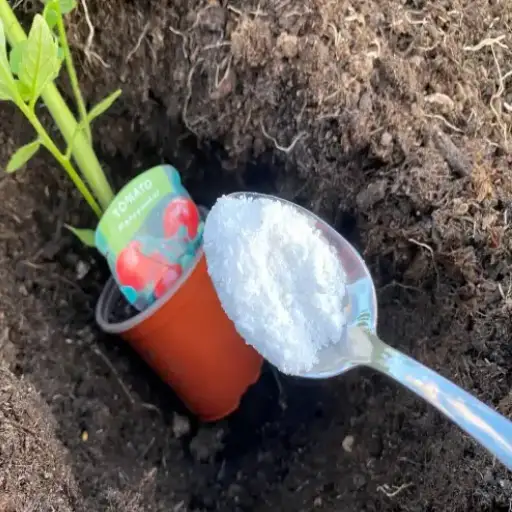
How Much Epsom Salt Per Gallon for Houseplants?
In determining the dosage of Epsom salt to add per gallon of water for houseplants, I always take a measured approach so that I do not overapply or underapply it. The general guideline is Epsom salt one to two teaspoons for every gallon of water, but it depends on the individual plant. This concentration ensures that enough magnesium and sulfate are available to enhance chlorophyll production, nutrient uptake, and the growth of the plant.
For balanced soil, the lower end of one teaspoon per gallon is great for preventive and maintenance applications. Two teaspoons per gallon is corrective for plants with magnesium deficiency manifesting as interveinal chlorosis or poor flowering.
It’s important to not use the solution more frequently than every month as too much magnesium can throw off the nutrient balance in the soil and cause issues like calcium lock out. Besides, I make sure to completely dissolve the Epsom salt in water before using it so that I do not end up with uneven distribution problems. Following this logic ensures that my houseplants get better care and become healthier and more productive.
Signs Your Houseplant Needs Epsom Salt
To ascertain whether an Epsom salt application on your house plant is necessary, you have to look out for certain growth-related symptoms. The following signs might suggest that a magnesium deficiency exists, which can be alleviated with an Epsom salt solution:
- Yellowing Leaves: Older leaves on the plant may turn yellow while the veins remain green. If there is too little magnesium in the plant, these plants will not have chlorophyll produced in older leaves, hence turning yellow and elderly.
- Poor flower or fruit development: Magnesium aids in plant photosynthesis as well as energy movement. In a situation where there is not enough magnesium, the plant is unable to bloom or develop fruits properly, resulting into small, vegetative parts.
- Stunted growth: The plants will not die from magnesium deficiency, but, in affecting the other aspects of the plant’s growth, it will ensure the overall vigor of the plant is reduced.
- Leaf Curling or Distortion: The leaves, along with their color, might copy and taper; magnesium deficiency gives way to further symptoms.
By checking these symptoms periodically and using Epsom salt responsibly, you will be able to correct magnesium deficiencies and help your house plant garden flourish.
Reference sources
Frequently Asked Questions (FAQs)
Q: What is Epsom salt, and how does it benefit garden plants?
A: Epsom salt, chemically known as magnesium sulfate (MgSO4), provides essential nutrients like magnesium and sulfur to garden plants. These nutrients contribute to the healthy growth of plants by aiding in photosynthesis, improving nutrient absorption, and enhancing seed germination.
Q: How can Epsom salt benefit pepper plants specifically?
A: Pepper plants can benefit from Epsom salt because magnesium plays a crucial role in the production of chlorophyll, which is essential for photosynthesis. This can lead to greener foliage and improved fruit production, especially during the growing season.
Q: How often should Epsom salt be applied to plants for optimal results?
A: For optimal results, it is generally recommended to add one tablespoon of Epsom salt per gallon of water and apply it once a month to your garden plants. However, frequency may vary depending on the specific needs of the plants and soil conditions.
Q: Can Epsom salt be used on all types of plants?
A: While many plants can benefit from Epsom salt, it is most beneficial when used on plants that are known to need extra magnesium and sulfur, such as tomatoes and peppers. It is important to conduct a soil test to determine if your soil is deficient in these nutrients before applying Epsom salt.
Q: Is it possible to use too much Epsom salt on plants?
A: Yes, using too much Epsom salt can do more harm than good. Excessive magnesium can interfere with the uptake of other essential nutrients like calcium in the soil. Always follow recommended guidelines and adjust based on a soil test.
Q: Can Epsom salt change the soil’s pH?
A: Epsom salt itself does not significantly change the soil’s pH, but it can help improve nutrient uptake in alkaline soils. If the soil test indicates that your soil is deficient in magnesium, Epsom salt can be beneficial without altering the pH.
Q: Are there any plants that shouldn’t be treated with Epsom salt?
A: Epsom salt may not be needed for plants that already receive adequate magnesium and sulfur from the soil or other fertilizers. Overuse of Epsom salt can lead to nutrient imbalances, so it is unnecessary unless your soil test indicates a deficiency.
Q: How can Epsom salt affect seed germination?
A: Epsom salt can aid in seed germination by providing essential nutrients that promote root development and healthy growth. Adding a small amount of Epsom salt to the soil or water can enhance the germination process.
Q: When should Epsom salt be added to compost?
A: Epsom salt can be added to compost to enrich it with magnesium and sulfur, which are beneficial for plant growth. Adding it during the composting process can help ensure these nutrients are available to plants when the compost is applied to the soil.

